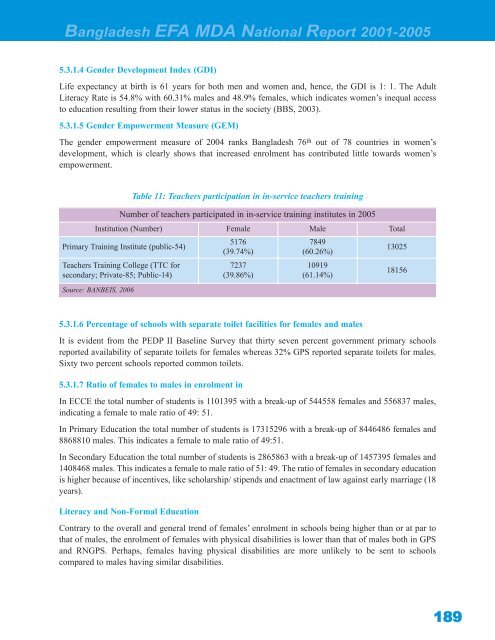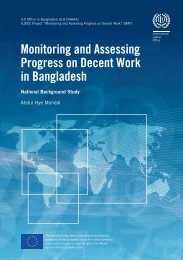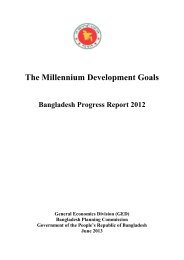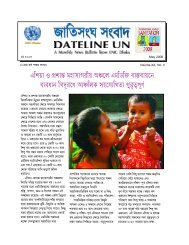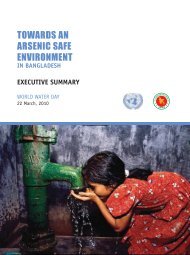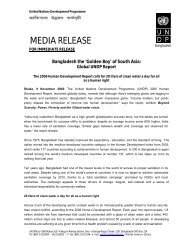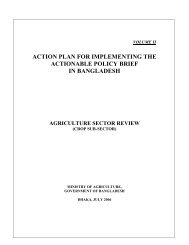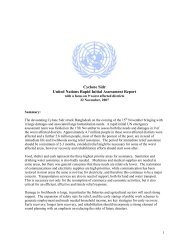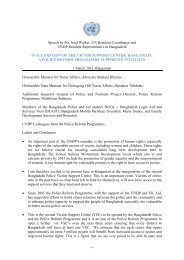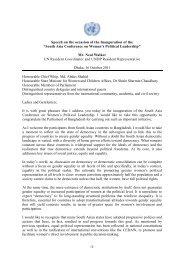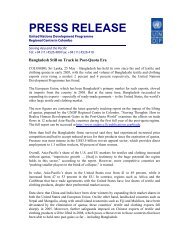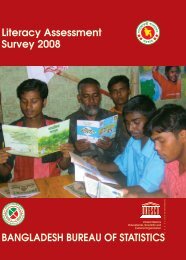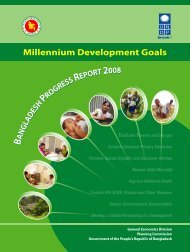- Page 2 and 3:
Bangladesh EFA MDA National Report
- Page 4 and 5:
Bangladesh EFA MDA National Report
- Page 6 and 7:
Bangladesh EFA MDA National Report
- Page 8 and 9:
Bangladesh EFA MDA National Report
- Page 10 and 11:
Bangladesh EFA MDA National Report
- Page 12 and 13:
Bangladesh EFA MDA National Report
- Page 14 and 15:
Bangladesh EFA MDA National Report
- Page 16 and 17:
Bangladesh EFA MDA National Report
- Page 18 and 19:
Bangladesh EFA MDA National Report
- Page 20 and 21:
Bangladesh EFA MDA National Report
- Page 22 and 23:
Bangladesh EFA MDA National Report
- Page 24 and 25:
Bangladesh EFA MDA National Report
- Page 26 and 27:
Bangladesh EFA MDA National Report
- Page 28 and 29:
Bangladesh EFA MDA National Report
- Page 30 and 31:
Bangladesh EFA MDA National Report
- Page 32 and 33:
Bangladesh EFA MDA National Report
- Page 34 and 35:
Bangladesh EFA MDA National Report
- Page 36 and 37:
Bangladesh EFA MDA National Report
- Page 38 and 39:
Bangladesh EFA MDA National Report
- Page 40 and 41:
Bangladesh EFA MDA National Report
- Page 42 and 43:
Bangladesh EFA MDA National Report
- Page 44 and 45:
Bangladesh EFA MDA National Report
- Page 46 and 47:
Bangladesh EFA MDA National Report
- Page 48 and 49:
Bangladesh EFA MDA National Report
- Page 50 and 51:
Bangladesh EFA MDA National Report
- Page 52 and 53:
Bangladesh EFA MDA National Report
- Page 54 and 55:
Bangladesh EFA MDA National Report
- Page 56 and 57:
Bangladesh EFA MDA National Report
- Page 58 and 59:
Bangladesh EFA MDA National Report
- Page 60 and 61:
Bangladesh EFA MDA National Report
- Page 62 and 63:
Bangladesh EFA MDA National Report
- Page 64 and 65:
Bangladesh EFA MDA National Report
- Page 66 and 67:
Bangladesh EFA MDA National Report
- Page 68 and 69:
Bangladesh EFA MDA National Report
- Page 70 and 71:
Bangladesh EFA MDA National Report
- Page 72 and 73:
Bangladesh EFA MDA National Report
- Page 74 and 75:
Bangladesh EFA MDA National Report
- Page 76 and 77:
Bangladesh EFA MDA National Report
- Page 78 and 79:
Bangladesh EFA MDA National Report
- Page 80 and 81:
Bangladesh EFA MDA National Report
- Page 82 and 83:
Bangladesh EFA MDA National Report
- Page 84 and 85:
Bangladesh EFA MDA National Report
- Page 86 and 87:
Bangladesh EFA MDA National Report
- Page 88 and 89:
Bangladesh EFA MDA National Report
- Page 90 and 91:
Bangladesh EFA MDA National Report
- Page 92 and 93:
Bangladesh EFA MDA National Report
- Page 94 and 95:
Bangladesh EFA MDA National Report
- Page 96 and 97:
Bangladesh EFA MDA National Report
- Page 98 and 99:
Bangladesh EFA MDA National Report
- Page 100 and 101:
Bangladesh EFA MDA National Report
- Page 102 and 103:
Bangladesh EFA MDA National Report
- Page 104 and 105:
Bangladesh EFA MDA National Report
- Page 106 and 107:
Bangladesh EFA MDA National Report
- Page 108 and 109:
Bangladesh EFA MDA National Report
- Page 110 and 111:
Bangladesh EFA MDA National Report
- Page 112 and 113:
Bangladesh EFA MDA National Report
- Page 114 and 115:
Bangladesh EFA MDA National Report
- Page 116 and 117:
Bangladesh EFA MDA National Report
- Page 118 and 119:
Bangladesh EFA MDA National Report
- Page 120 and 121:
Bangladesh EFA MDA National Report
- Page 122 and 123:
Bangladesh EFA MDA National Report
- Page 124 and 125:
Bangladesh EFA MDA National Report
- Page 126 and 127:
Bangladesh EFA MDA National Report
- Page 128 and 129:
Bangladesh EFA MDA National Report
- Page 130 and 131: Bangladesh EFA MDA National Report
- Page 132 and 133: Bangladesh EFA MDA National Report
- Page 134 and 135: Bangladesh EFA MDA National Report
- Page 136 and 137: Bangladesh EFA MDA National Report
- Page 138 and 139: Bangladesh EFA MDA National Report
- Page 140 and 141: Bangladesh EFA MDA National Report
- Page 142 and 143: Bangladesh EFA MDA National Report
- Page 144 and 145: Bangladesh EFA MDA National Report
- Page 146 and 147: Bangladesh EFA MDA National Report
- Page 148 and 149: Bangladesh EFA MDA National Report
- Page 150 and 151: Bangladesh EFA MDA National Report
- Page 152 and 153: Bangladesh EFA MDA National Report
- Page 154 and 155: Bangladesh EFA MDA National Report
- Page 156 and 157: Bangladesh EFA MDA National Report
- Page 158 and 159: Bangladesh EFA MDA National Report
- Page 160 and 161: Bangladesh EFA MDA National Report
- Page 162 and 163: Bangladesh EFA MDA National Report
- Page 164 and 165: Bangladesh EFA MDA National Report
- Page 166 and 167: Bangladesh EFA MDA National Report
- Page 168 and 169: Bangladesh EFA MDA National Report
- Page 170 and 171: Bangladesh EFA MDA National Report
- Page 172 and 173: Bangladesh EFA MDA National Report
- Page 174 and 175: Bangladesh EFA MDA National Report
- Page 176 and 177: Bangladesh EFA MDA National Report
- Page 178 and 179: Bangladesh EFA MDA National Report
- Page 182 and 183: Bangladesh EFA MDA National Report
- Page 184 and 185: Bangladesh EFA MDA National Report
- Page 186 and 187: Bangladesh EFA MDA National Report
- Page 188 and 189: Bangladesh EFA MDA National Report
- Page 190 and 191: Bangladesh EFA MDA National Report
- Page 192 and 193: Bangladesh EFA MDA National Report
- Page 194 and 195: Bangladesh EFA MDA National Report
- Page 196 and 197: Bangladesh EFA MDA National Report
- Page 198 and 199: Bangladesh EFA MDA National Report
- Page 200 and 201: Bangladesh EFA MDA National Report
- Page 202 and 203: Bangladesh EFA MDA National Report
- Page 204 and 205: Bangladesh EFA MDA National Report
- Page 206 and 207: Bangladesh EFA MDA National Report
- Page 208 and 209: Bangladesh EFA MDA National Report
- Page 210 and 211: Bangladesh EFA MDA National Report
- Page 212 and 213: Bangladesh EFA MDA National Report
- Page 214 and 215: Bangladesh EFA MDA National Report
- Page 216 and 217: Bangladesh EFA MDA National Report
- Page 218 and 219: Bangladesh EFA MDA National Report
- Page 220 and 221: Bangladesh EFA MDA National Report
- Page 222 and 223: Bangladesh EFA MDA National Report


